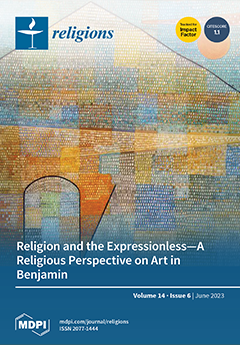This paper is a continuation of an earlier study published by the current author dedicated to the virtually unexplored tantric Buddhist scholar of the
phyi dar period, *Jñānākara (11th century), through the textual analysis of his masterpiece, the
Introduction to the [Path of]
[...] Read more.
This paper is a continuation of an earlier study published by the current author dedicated to the virtually unexplored tantric Buddhist scholar of the
phyi dar period, *Jñānākara (11th century), through the textual analysis of his masterpiece, the
Introduction to the [Path of] Mantra (Skt. *
Mantrāvatāra), now available only in the Tibetan translation as
Gsang sngags ‘jug pa. In the previous paper, I have discussed the broader historical framework of the eleventh-century Indo-Tibetan world and *Jñānākara’s role in establishing, what I called, the “orthodoxy of tantric practice”. I have also provided a critical edition of the root text, the *
Mantrāvatāra, accompanied by an English translation. While the previous study focused mainly on the debatable and highly controversial issue of tantric sexual initiations adopted by the monastics and hermeneutical tools employed by *Jñānākara to refute the literal interpretation of tantric scriptures, the current paper will concentrate on the exposition of tantric practice understood as the accumulation of causes and conditions (
hetu-pratyaya) leading to the status of the siddha. This paper will trace tantric and non-tantric elements in *Jñānākara’s construction of the Buddhist siddha that integrated the
kāya doctrine of the Yogācāra. My analysis will be based on *Jñānākara’s auto-commentary to his root text, the
Commentary to the Introduction to the [Path of] Mantra (Skt. *
Mantrāvatāravṛtti, Tib.
Gsang sngags ‘jug pa ‘grel pa) which has not received any scholarly attention so far. Special attention will be paid to the intertextual dimension of his discourse that integrates the Mahāyāna models of the bodhisattva path.
Full article





